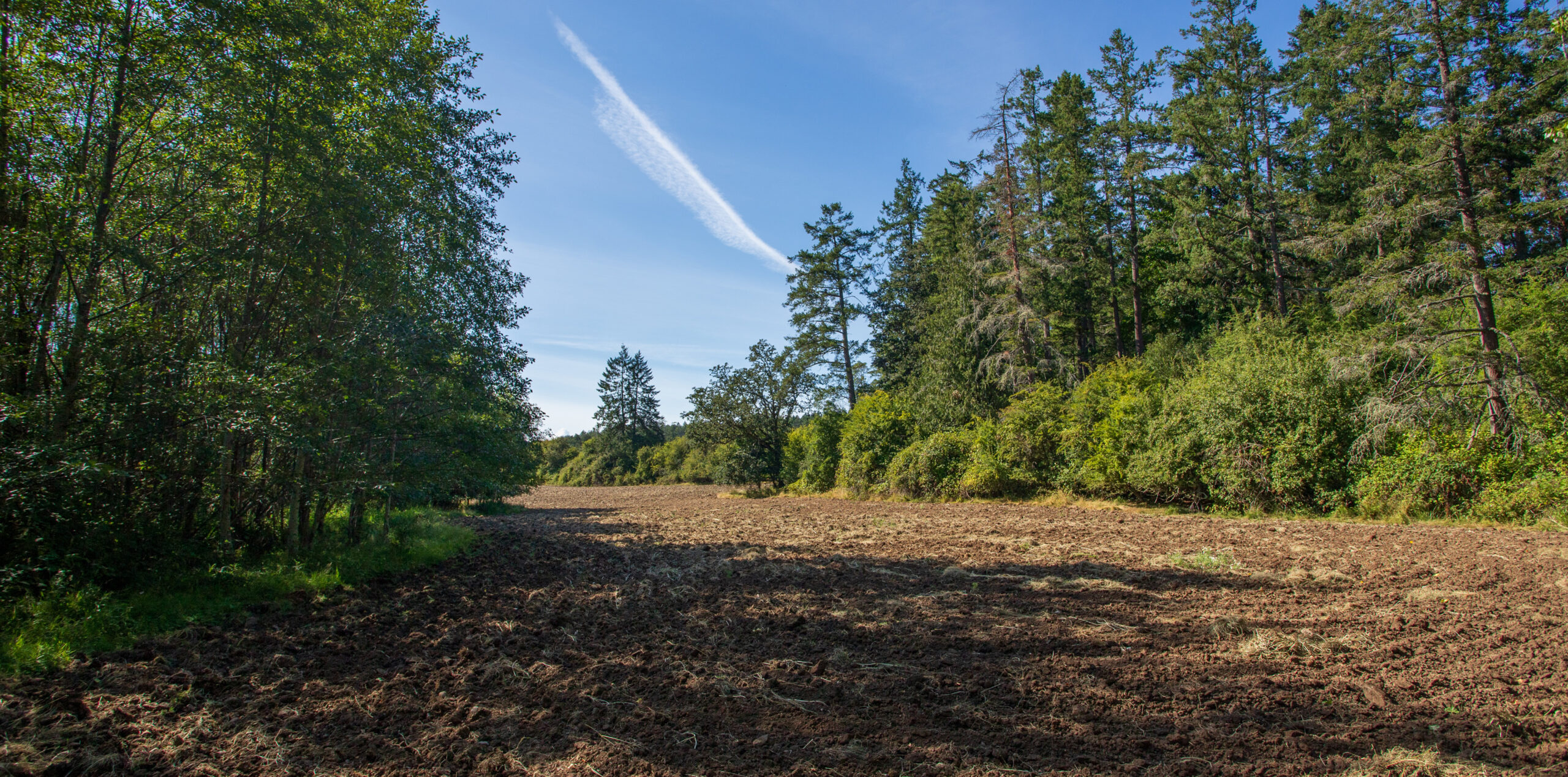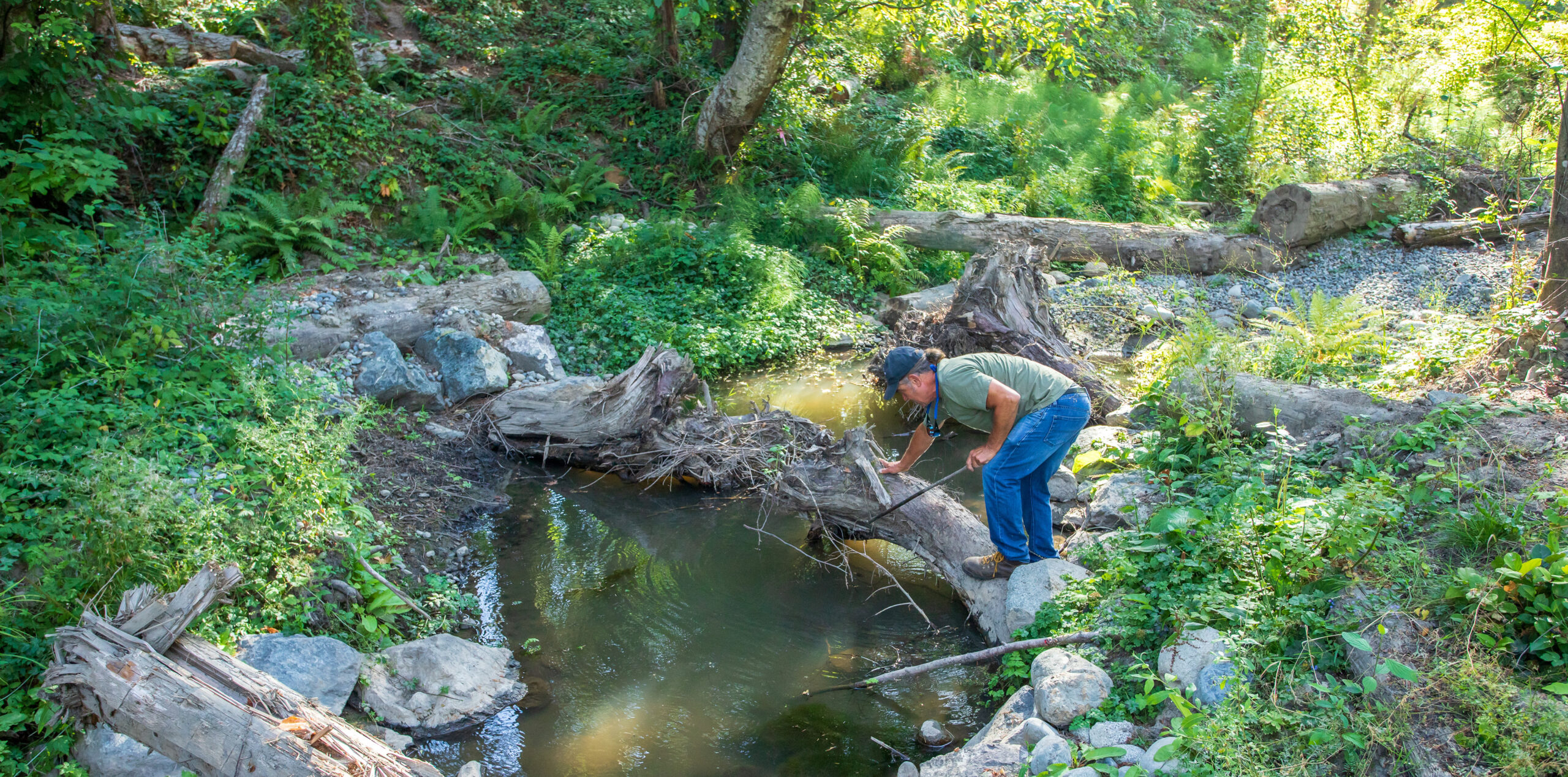by Jo Barnes | photos by Kathryn Alvarez Photography –
Tangles of invasive blackberry canes dominated and choked out any other plants along the stream. Fish numbers were dwindling and nearby pastures were flooding.
If we were to stop there, this would be just another sad story of damage to the local environment. But some people were determined not to let the story end there.
Waterways intersect land tracts on the Peninsula, and when good stewardship of them takes place, the health of both land and watershed are secured.
For over 20 years, the Peninsula Streams Society has been working with local owners of farmland to restore and protect aquatic ecosystems in Greater Victoria and the Saanich Peninsula and along the way has provided expertise and education in restoration and conservation of these ecosystems. “The connection between landowners and farmers and Peninsula Streams Society is absolutely essential,” shares Ian Bruce, Senior Biologist and a founder of the society. “Streams go through agricultural land and a large part of this is in private hands. We contact landowners and do stewardship and restoration.”
Since the society began in 2002, its work has been diverse, including projects such as mitigating the impact of fertilization from farms, treating stormwater, monitoring water quality and improving stream habitat. What was once a small group of environmental enthusiasts has grown into a large organization of dedicated local individuals working with other entities to reach their objectives of ecological restoration through community stewardship and environmental education. “We now have 400 active members and 175 volunteers,” relates Ian. “We receive donations and grants from corporate, private, municipal, provincial and federal organizations.”
Whether it’s farming activities or commercial and residential building developments, there is always impact on ecosystems. Peninsula Streams supports volunteer stewardship groups such as Friends of Chalet Creek and Friends of Tod Creek Watershed, providing access to funding, resources, and professional advice. It collaborates with local farmers to improve the streams running along their properties and assists them with responsible and effective farming practices including optimum plowing techniques, creating buffers to protect soil and reduce erosion, and establishing wetlands to enhance biodiversity, mitigate flooding, and provide nutrients. “You can’t have healthy streams and estuaries if practices on land are poor,” shares Ian.
One of Peninsula Streams’ projects is the restoration of the Hagan and Graham Creek watershed, one of the largest watersheds on the Peninsula and covering a significant portion of Central Saanich. Hagan Creek originates in the north from Mount Newton. Graham Creek originates south of the Central Saanich border between West Saanich and Old West Saanich Roads. It flows along the western boundary of Centennial Park. Peninsula Streams has collaborated with local landowners and the results have benefitted both property owner and environment.
“Graham Creek and Hagan Creek are to the south of my house,” shares Anne Waterhouse, who maintains a large acreage for growing hay. “There was way too much blackberry cane along the stream. Peninsula Streams removed it and improved the stream so that the trout can multiply.”
Volunteers removed the blackberry, planted evergreen trees and added gravel to the stream. Anne talks about the positive results. “They removed 12 piles of blackberry cane. I helped move the removed blackberry to burn piles that became 12 feet high. The trees they planted provide shade which protects trout and also stops flooding to the property.”
Another watershed is Chalet Creek, which runs from Tatlow and Alder Roads and eventually into Deep Cove. It runs through significant farmland along the way. Peninsula Streams has been involved here too, working with local landowners. Fran Robertson, who lives in the area and leases out her acreage to local farmers for pasture, attests to the positive changes: “The waterway and environment have benefited from the Peninsula Streams habitat restoration. Winter flooding in the pasture beside the creek is reduced.”
As with Hagan-Graham Creek, Peninsula Streams volunteers planted trees here and added gravel to the streambed which can serve as a place for salmon to lay their eggs. “The trees planted beside the creek now are tall enough to shade the creek and also help slow the flow. The speed of the water is slowed by natural barriers of rocks and fallen trees and as a result the gravel beds do not wash away as easily,” says Fran. “All of these changes have improved the habitat for salmon, which are starting to return to the creek to spawn.”
The Society does extensive work to educate in classrooms and out in the field about watersheds, pollution prevention, salmon life cycle and habitat conservation. Collaborations with local farmers and property owners and dedicated work towards restoration are born out of awareness of the interrelationship between the land and watershed and our critical role as stewards of both.
Change begins with awareness and taking that first step. It might just be removing a tangle of blackberry, but the ecological repercussions can reach far into the future.





